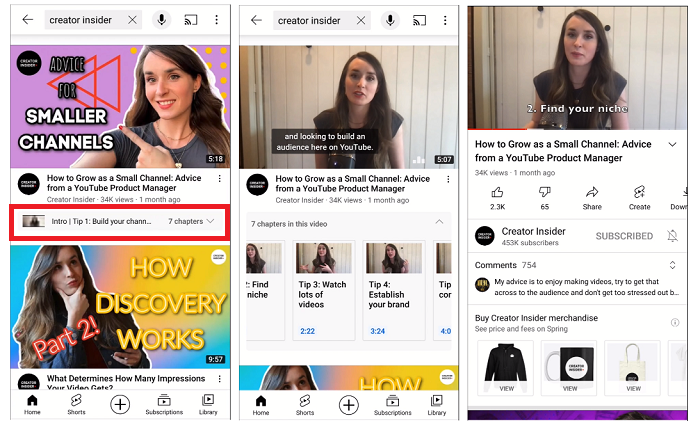SOCIAL
YouTube Adds Video Chapter Listings in Search, Which Could be a New SEO Consideration

YouTube is looking to enhance its in-app search tools, with new video chapters within search results, and expanded access to content in different languages to broaden search capacity.
The big update is video chapters in search. Back in July, YouTube announced that it would be rolling out automated chapter segmentation for all uploaded video clips, with YouTube’s system working to identify key elements within each video in order to improve and refine user navigation.
Now, we’re seeing exactly how YouTube is looking to use this element within its search tools.
Today, YouTube has added a new search element, which will enable users to hone their search down to specific elements of each clip, in order to quickly find the exact section that they’re looking for.

As you can see here, now, when a video is displayed within your YouTube search results, you’ll also be able to tap on a new ‘Chapters’ drop-down, which will enable you to connect through to specific elements of that clip, direct from your search results.
As explained by YouTube:
“Up until now, when you browsed for a video to watch on YouTube, you’d see a thumbnail image of each video. It gave you a chance to gather a quick snapshot of the video’s content. Now, you’ll be able to make even more informed decisions about what you’re going to watch through video chapters directly in the search page. When available, these time-stamped images detail the different topics covered in videos and let you better evaluate the video you’re about to watch. You can also jump directly to the section most relevant to your specific interest.“
Note that this is not available for all videos as yet. As per YouTube’s original announcement on automated chapters, not all videos are eligible for auto-segmentation as yet, but over time, this will be where YouTube is headed, as it looks to improve discovery by providing more specific video segment matches for each query.
Worth noting, too, that creators are able to edit the automatically added segments in their clips, or manually enter their own, which could provide a new opportunity for discovery.
As you can see in the above example, each chapter is specifically labeled and named – and for marketers and those looking to maximize their video discovery, it may be worth checking the segmentation of their clips, and optimizing these chapter names based on relative keyword search volume. If you know that people are looking for info on ‘black shoelaces’ and you have a specific video segment on this, you could look to manually add that title into your clip.
Don’t go spamming it with terms not related to your video, though. Google’s pretty good at detecting this type of inauthentic activity.
In addition to this, YouTube’s also rolling out autoplay video examples in search result thumbnails on mobile (already available on desktop), while it’s also launching a new test that will see it show search results from other languages with automatically translated captions.
“This means that someone in Thailand can learn about quantum physics from a professor at MIT or viewers in Brazil can explore the Grand Canyon from home, with captions in their local language. We’ll start supplementing search results with English videos and plan to expand to more languages. Our hope is that all global content will become more accessible through translated captions and help creators reach a more global audience.”
Lastly, YouTube’s also looking to provide more context for some YouTube searches with additional website links for certain topics, sourced via Google search. That, ideally, will help give users more data sources for low volume and/or contentious search results, which could help to guide search queries, even if video content is not available.
These are helpful additions, which do have direct implications for video SEO and discovery process, and if you’re serious about YouTube marketing, it’ll be worth digging a little deeper into each element to determine the potential impact, and potential for your content.
You can read more about YouTube’s automatic video chapters here.
